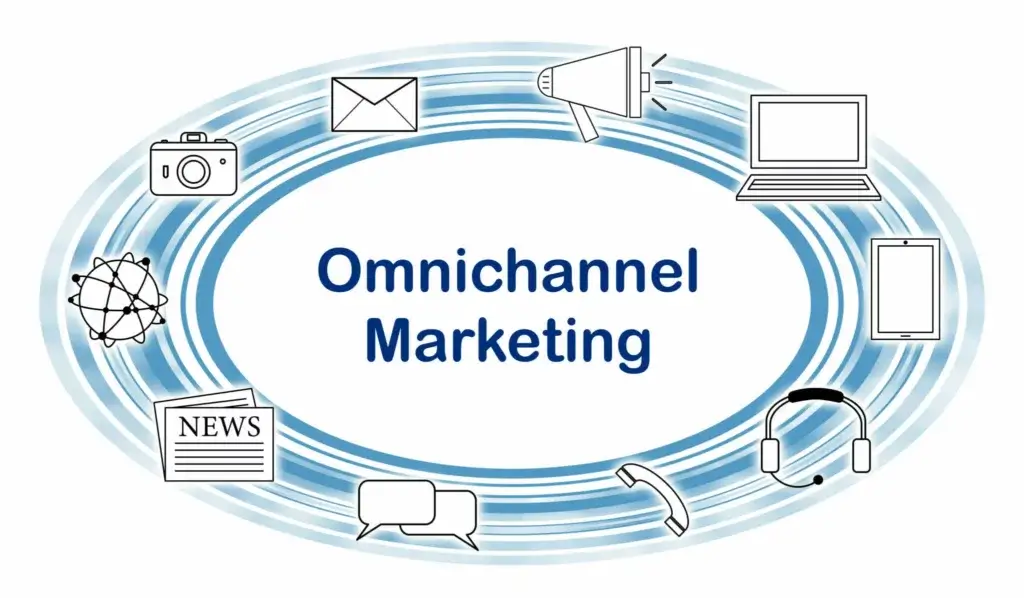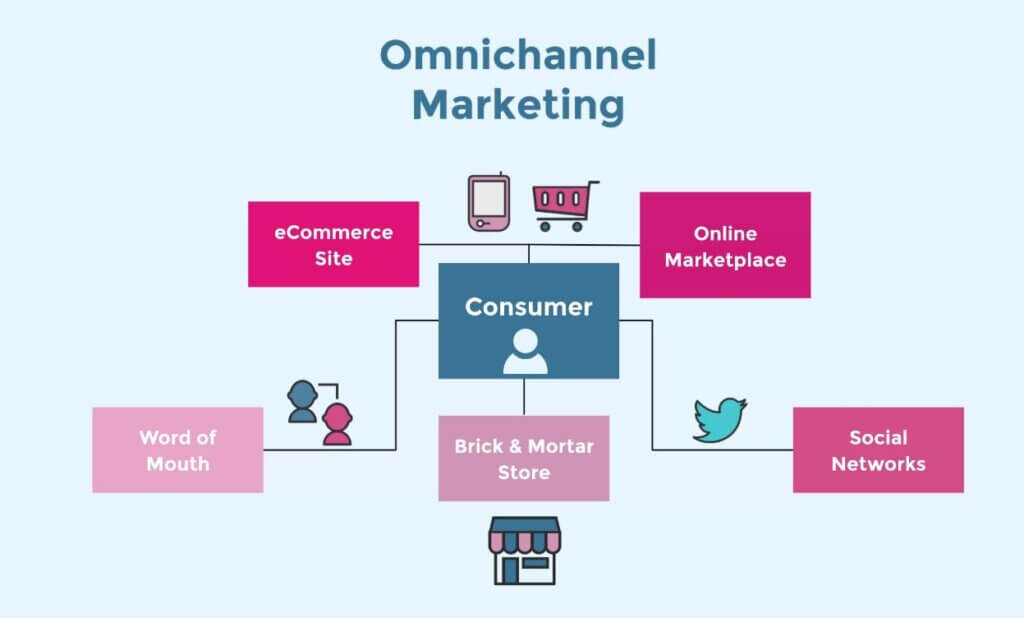Guide to Omnichannel Content Marketing for Explosive Growth
Omnichannel content marketing is a powerful way to reach your target audience wherever they are, whether on social media, email, your website, or in-person events. Creating a seamless experience across all channels can increase engagement, build brand loyalty, and drive sales.
In this guide, we’ll take you through the basics of omnichannel content marketing and show you how to create a winning strategy to help you outrank your competitors in search results.
What is Omnichannel Content Marketing?
Omnichannel content marketing is simply creating and distributing content across multiple channels and then integrating them within your content ecosystem. This means your messaging and branding are consistent across all channels, providing your audience with a seamless experience that keeps them engaged and returning for more.
Why is Omnichannel Content Marketing Important?
Today’s consumers are more tech-savvy than ever before, and they expect to be able to interact with businesses on their terms. This means they want to engage with your brand across multiple channels, whether through social media, email, website, or in-person events.
Using an omnichannel approach, you can create a seamless experience for your audience, making it easier for them to engage with your brand and, ultimately, purchase.
Understanding Omnichannel Content Marketing
Omnichannel content marketing is simply creating content that can be used across multiple channels and integrating them within your content ecosystem. The goal is to create a consistent and seamless experience for your audience, regardless of where they engage with your content.
Benefits of Omnichannel Content Marketing
A well-executed omnichannel content can deliver numerous benefits to your business, including:
- Increased brand awareness: By creating and distributing engaging content across multiple channels, you can reach a wider audience and increase your brand’s visibility.
- Higher customer engagement: Omnichannel content marketing can help you build deeper relationships with your customers by delivering personalized content that meets their needs and preferences.
- Improved customer experience: By providing a consistent and seamless experience across all channels, you can enhance your customer’s overall experience with your brand and improve their satisfaction.
- Better conversion rates: By delivering the right message to the right customer at the right time, you can increase your conversion rates and drive more sales.
Critical Components of Omnichannel Content Marketing
To create an effective omnichannel content marketing strategy, you need to focus on several key components:
- Audience personas: To effectively reach your audience, you need to understand who they are, what they care about, and where they engage with content. You can tailor your content to meet their specific needs and preferences by creating audience personas.
- Content creation: Creating high-quality content that resonates with your audience is crucial for omnichannel content marketing success. Your content should be relevant, informative, engaging, and tailored to each channel and audience persona.
- Content distribution: Once you have created your content, you must distribute it across multiple channels, including social media, email, blogs, and more. Using various channels, you can reach your audience wherever they are.
- Analytics: To measure the success of your omnichannel content marketing strategy, you need to track and analyze your performance across multiple channels. This will help you optimize your system for better results.
- Integration: Finally, you must integrate your content across all channels to create a seamless and consistent experience for your audience. This means ensuring that your messaging and branding are consistent across all touchpoints.
Creating an Omnichannel Content Strategy
- Define Your Goals – Before creating content, defining your goals is essential. What do you want to achieve with your content? Do you want to increase brand awareness, drive sales, or build brand loyalty?
- Identify Your Audience – Who are you trying to reach with your content? What channels do they use to engage with your brand?
- Create a Content Plan – Once you’ve defined your goals and identified your audience, it’s time to create a content plan. This should include the types of content you’ll make, the channels you’ll use to distribute it, and the frequency at which you publish it.
- Implement Your Plan – With your content plan in place, it’s time to start creating and distributing content across multiple channels. Remember to keep your messaging and branding consistent across all channels, and track your results to see what’s working and what’s not.
Conclusion
Omnichannel content marketing is a powerful way to reach your target audience wherever they are, increase engagement, build brand loyalty, and drive sales. Using an omnichannel approach, you can create a seamless experience for your audience, making it easier for them to engage with your brand and, ultimately, purchase.
FAQs
What are omnichannel content examples?
Omnichannel content refers to content that can be used across multiple channels and integrated within your content ecosystem. Here are some examples of omnichannel content:
- Blog posts: Blog posts can be used as the foundation of your omnichannel content marketing strategy. They can be repurposed and distributed across multiple channels, such as social media, email, and podcasts.
- Social media posts: Social media posts can be used to promote your blog posts, share news and updates, and engage with your audience. By tailoring your social media content to each platform, you can reach your audience where they are most active.
- Email newsletters can be used to share your latest blog posts, offer exclusive content, and keep your audience up-to-date with your brand. You can improve engagement and conversions by personalizing your email content and segmenting your audience.
- Infographics: Infographics are a visual way to communicate complex information and data. They can be shared across multiple channels, such as social media and email, to provide value to your audience and drive traffic to your website.
- Videos: Videos are a highly engaging way to communicate your brand’s message and provide value to your audience. They can be used across multiple channels, such as social media, email, and your website, to increase engagement and drive conversions.
Using various omnichannel content, you can reach your audience wherever they are and provide a consistent and engaging experience across all touchpoints.
How to be successful with omnichannel marketing?
To be successful with omnichannel marketing, you need to focus on the following key strategies:
- Develop a clear strategy: Before creating content, develop a clear strategy that outlines your goals, target audience, messaging, and distribution channels. Your plan should be tailored to each track and audience persona to ensure maximum engagement and relevance.
- Tailor your content to each channel: Your content should be tailored to each track and audience persona to ensure maximum engagement and relevance. For example, a blog post may need to be modified for social media, and an email newsletter may need to be customized for different segments of your audience.
- Consistency is vital: Consistency in messaging, branding, and tone is crucial for creating a seamless and engaging customer experience. Your messaging should be consistent across all touchpoints, and your branding should be recognizable and consistent across all channels.
- Use data to optimize your strategy: Use data and analytics to track the performance of your content across multiple channels and optimize your system for better results. This may include A/B testing different content formats, testing other distribution channels, and analyzing audience engagement metrics.
- Be flexible: Adapt your strategy as your audience and channels evolve. Continuously monitor and optimize your system to ensure you reach your audience where they are most active and provide them with the content they want and need.
By following these strategies, you can create a successful omnichannel marketing strategy that increases your brand’s visibility, improves the customer experience, and drives conversions.





